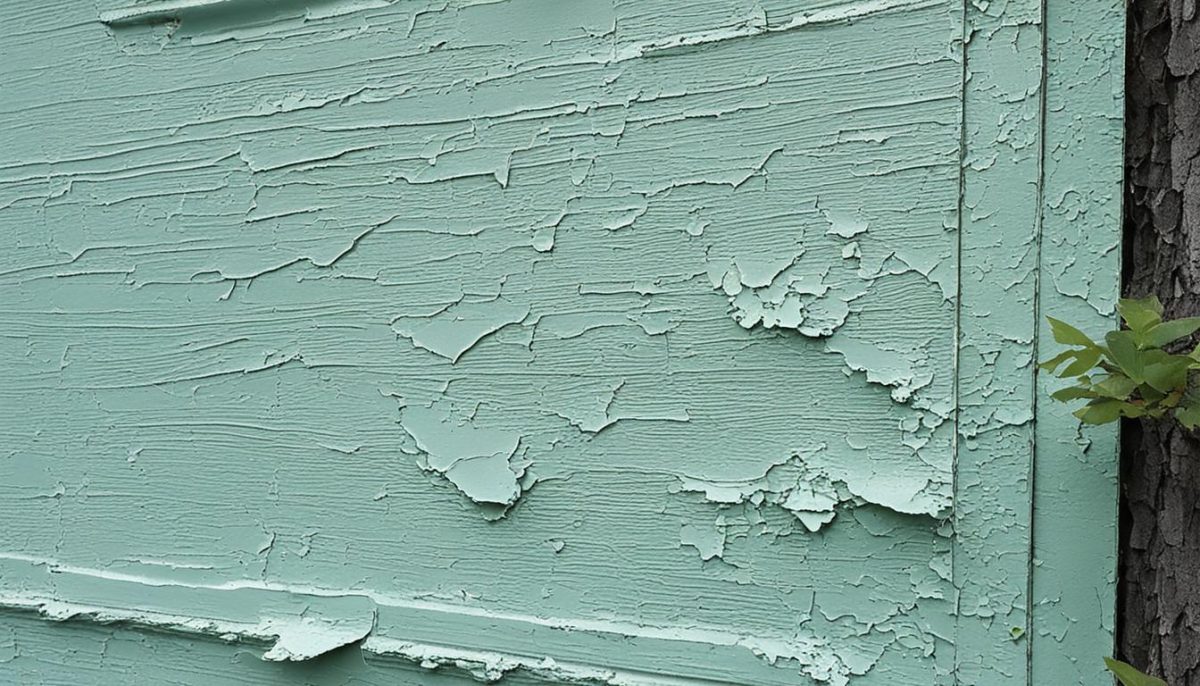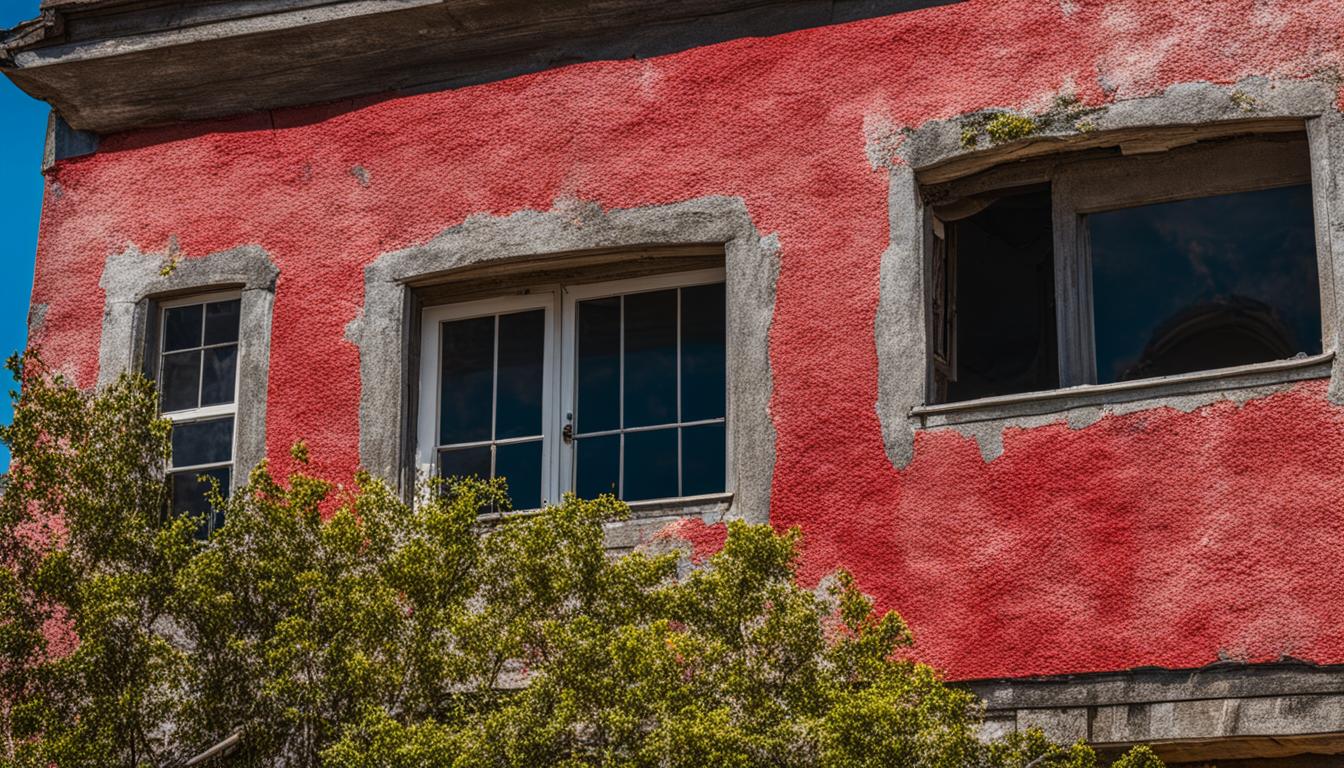Are you considering using interior paint on the exterior of your home? Before you grab that leftover can of paint from your last living room makeover, it’s crucial to understand the risks and potential outcomes.
Using interior paint outside can lead to a range of issues, from paint peeling and fading to insufficient weather resistance. Interior paint is specifically formulated for indoor use, where it is not exposed to the harsh elements that exterior surfaces endure.
When applied to the outside of your home, interior paint is likely to deteriorate quickly, compromising both its appearance and protective properties. To ensure a successful and long-lasting exterior paint job, it’s important to follow proper guidelines and techniques.
In this article, we will explore the risks associated with using interior paint outside and provide invaluable tips and advice for achieving beautiful results with exterior painting. Understanding the differences between interior and exterior paint compositions is crucial for avoiding potential issues that may arise from using the wrong type of paint on exterior surfaces.
Ready to learn more? Let’s dive into the world of exterior painting do’s and don’ts to ensure your home’s exterior stays stunning and protected.
Understanding the Differences Between Interior and Exterior Paint
Before delving into the potential issues of using interior paint outside, it is essential to understand the fundamental differences between interior and exterior paint. These differences go beyond just the label on the can. Interior paint is specifically designed for use on indoor surfaces, while exterior paint is formulated to withstand the harsh outdoor conditions.
Composition: Interior and exterior paints have different compositions to cater to their respective environments. Interior paint typically contains lower levels of volatile organic compounds (VOCs) to minimize odors and toxic emissions. On the other hand, exterior paint contains higher levels of additives and resins that enhance its durability and weather resistance.
Durability: Exterior paint is engineered to withstand various weather conditions, including extreme temperature fluctuations, UV exposure, moisture, and mold. It is formulated to resist cracking, peeling, and fading, ensuring a long-lasting finish. Interior paint, although durable, lacks the same level of protective features as exterior paint and may not hold up well when exposed to the elements.
Weather Resistance: The primary difference between interior and exterior paint lies in their ability to withstand different weather conditions. Exterior paint is specifically designed to withstand rain, snow, sunlight, and other environmental factors without compromising its integrity. It forms a tough, waterproof barrier that protects your home’s exterior surfaces. In contrast, interior paint is not designed to withstand such elements and may quickly degrade when exposed to moisture and sunlight.
Comparing Interior and Exterior Paint
| Interior Paint | Exterior Paint | |
|---|---|---|
| Composition | Contains lower levels of VOCs | Contains higher levels of additives and resins for durability |
| Durability | Durable for indoor use | Formulated for long-lasting protection against weather elements |
| Weather Resistance | Not suitable for exposure to moisture, sunlight, and extreme temperatures | Designed to withstand rain, snow, sunlight, and other environmental factors |
Understanding the differences between interior and exterior paint is crucial when considering a painting project. Using interior paint outside can lead to undesirable outcomes, including peeling, fading, and inadequate protection for your home’s exterior surfaces. To ensure a successful and long-lasting paint job, it is essential to use the appropriate paint type for the intended surface and environment.
Risks of Using Interior Paint Outside
Now that we have an understanding of the differences between interior and exterior paint, it is important to acknowledge the risks involved when using interior paint on exterior surfaces. While it may be tempting to use leftover interior paint for an exterior project, it can lead to a range of issues that can compromise the longevity and appearance of your home’s exterior.
Potential Consequences
Using interior paint outside poses several risks, including:
- Paint Peeling: Interior paint is not designed to withstand the harsh outdoor elements, such as moisture, UV rays, and temperature fluctuations. As a result, it is more prone to peeling and bubbling, compromising the paint’s adhesion to the surface.
- Fading: Interior paint lacks the UV resistance found in exterior paint. Exposure to sunlight can cause interior paint to fade quickly, resulting in a dull and unattractive appearance.
- Insufficient Weather Resistance: Exterior paint is formulated to withstand rain, snow, wind, and other weather conditions. Interior paint, on the other hand, does not have the same level of weather resistance, which can lead to color fading, cracking, and deterioration.
Potential Impact
Using interior paint outside can have a significant impact on the overall appearance and protection of your home’s exterior. Not only can it result in peeling and fading paint, but it can also lead to costly repairs and the need for premature repainting. Additionally, using interior paint outside may void any warranties provided by the paint manufacturer.
It is always recommended to use exterior paint specifically formulated for outdoor use to ensure optimal performance and longevity. High-quality exterior paints offer superior weather resistance, UV protection, and durability, making them a wise investment for your home.
“Using interior paint on exterior surfaces is like wearing a t-shirt in a snowstorm. It’s simply not designed to withstand the elements, and the results can be disastrous.” – Emily Thompson, Professional Painter

| Risks of Using Interior Paint Outside | Potential Consequences |
|---|---|
| Paint Peeling | Interior paint is not designed to withstand outdoor elements such as moisture and UV rays. It is more prone to peeling and bubbling, compromising adhesion to the surface. |
| Fading | Interior paint lacks UV resistance, leading to quick fading when exposed to sunlight. This results in a dull and unattractive appearance. |
| Insufficient Weather Resistance | Exterior paint is formulated to withstand various weather conditions, while interior paint does not have the same level of weather resistance. This can cause color fading, cracking, and deterioration. |
Exterior Painting Do’s and Don’ts
When it comes to painting the exterior of your home, following the right techniques and guidelines is essential for achieving a beautiful and long-lasting finish. Here are some expert do’s and don’ts to keep in mind:
Do:
- Prepare the surface: Thoroughly clean and repair the exterior before painting. Remove dirt, mildew, and loose paint, and fill any cracks or holes.
- Choose the right type of paint: Opt for high-quality exterior paint that is specifically formulated for outdoor use. It should offer excellent weather resistance, durability, and color retention.
- Use the proper tools and techniques: Invest in quality brushes, rollers, and sprayers to ensure smooth and even application. Follow the recommended application techniques as per the paint manufacturer’s instructions.
- Apply multiple coats: To achieve a uniform and long-lasting finish, apply two or more coats of paint as necessary. Allow each coat to dry thoroughly before proceeding.
- Maintain the painted exterior: Regularly inspect and clean the painted surface to remove dirt, debris, and mold. Touch up any chipped or faded areas promptly to maintain the paint’s integrity.
Don’t:
- Paint in unsuitable weather conditions: Avoid painting during extreme temperatures, high humidity, or when rain is imminent. These conditions can affect the drying process and result in a subpar finish.
- Neglect proper surface preparation: Skipping or rushing the prep work can lead to paint failure and poor adhesion. Take the time to clean, prime, and repair the surface before applying the paint.
- Settle for low-quality materials: Using cheap or inferior paint products can result in premature paint failure and the need for frequent repainting. Invest in high-quality materials to ensure a durable and long-lasting finish.
- Overlook safety precautions: Protect yourself and your surroundings by wearing appropriate safety gear, such as goggles, gloves, and a mask. Cover nearby plants, windows, and outdoor furniture to prevent accidental paint splatters.
By following these exterior painting do’s and don’ts, you can achieve professional-looking results and protect your home’s exterior for years to come. Remember, proper preparation, quality materials, and attention to detail are the keys to a successful paint job.




